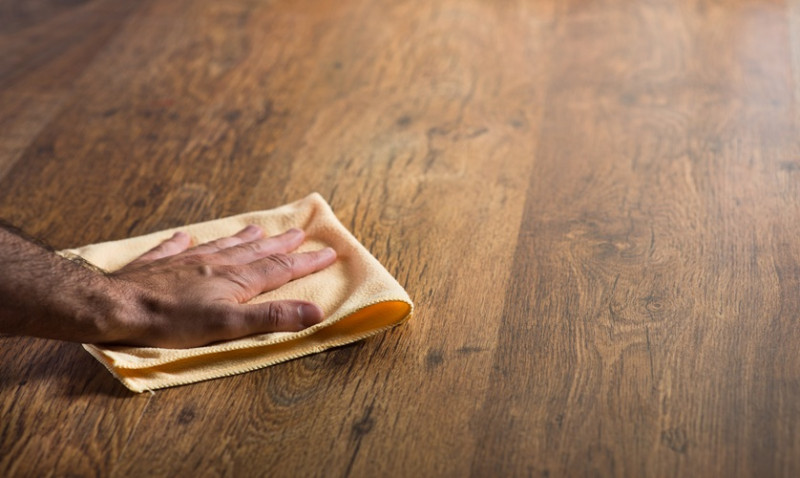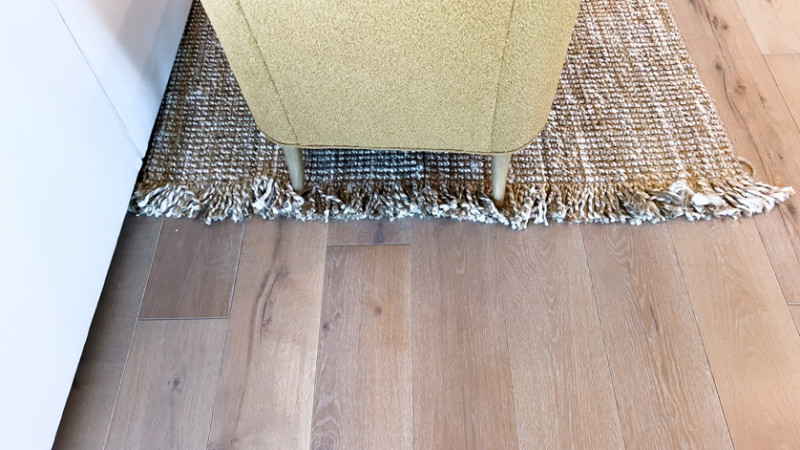
If you're looking to bring out the natural beauty of your wooden surfaces while also protecting them for years to come, OSMO PolyX Oil Wood Finish is one of the top choices in the UK market. Whether you're a DIY enthusiast revamping your home, a young professional adding personality to your flat, or a seasoned tradesperson working on client projects, understanding how to correctly apply this high-performance wood oil is key to achieving perfect results. In this comprehensive guide, we'll show you step-by-step how to apply OSMO PolyX Oil for durable, stunning wood finishes.
What Is OSMO PolyX Oil?
OSMO PolyX Oil is a premium hardwax-oil wood finish from Germany, engineered to protect interior wood surfaces like floors, worktops, furniture, and more. Unlike conventional varnishes or polyurethane coatings, PolyX Oil penetrates the wood fibres to harden and protect from the inside out, leaving a natural look and feel.
Formulated with natural oils and waxes, such as sunflower, soybean and thistle oil, it's suitable for a wide range of indoor wood types. It enhances grain definition, deepens natural tone, and protects against spills, stains, abrasion, and general wear and tear—all without forming a plastic film on the surface. The result is a microporous finish that allows the wood to breathe while being extremely durable and easy to care for.
PolyX Oil is available in matt, satin, or gloss finishes and comes in clear or pigmented versions. Its food-safe formula makes it ideal for kitchen worktops and dining furniture, making it a go-to solution for both designers and discerning homeowners across the UK.
Tools and Materials You’ll Need
Before getting started, make sure you have everything at hand for a seamless application process. Applying OSMO PolyX Oil correctly doesn’t require specialist trade tools, but quality preparation and the right applicators will ensure a professional-standard result.
| Tool/Material | Purpose |
|---|---|
| OSMO PolyX Oil | Main product for wood finishing |
| Stirring stick | To mix the oil evenly before application |
| Natural bristle brush or microfiber roller | Best for applying thin, even coats |
| Lint-free cloth or pad | To remove excess oil and buff surface |
| Floor buffer (optional) | Recommended for large areas or commercial projects |
| Sandpaper or sanding pads (120-150 grit) | For surface preparation |
| Vacuum cleaner or tack cloth | To remove dust before oiling |
| Protective gloves & mask | For health and safety |
Step 1: Prepare the Wood Surface
Proper surface preparation is crucial for achieving a smooth, consistent finish. Start by ensuring the wood is clean, dry and free of any old finishes such as lacquer or paint. OSMO PolyX Oil is designed for bare or previously oiled wood surfaces—so you'll need to strip or sand any existing sealants or coatings.
Sand the wood progressively using 120 to 150 grit sandpaper. Avoid sanding too finely (over 180 grit), as this can close the wood grain and affect absorption of the oil. If sanding a wood floor, ensure joints and edges are smooth for even results.
Once sanded, remove all dust particles using a vacuum or tack cloth. A pristine surface is essential for adhesion, so pay extra attention in corners and grain texture.
If applying to a wood surface in a kitchen or bathroom, ensure it's completely dry and acclimatised to room conditions for at least 24 hours before oiling. Oiling over damp or cold surfaces can lead to patchy absorption or delayed drying.
Step 2: Stir the Oil Thoroughly
Before opening the can, shake it gently. Once opened, thoroughly stir the OSMO PolyX Oil to ensure pigments and oils are evenly distributed. This is especially important for pigmented versions to prevent uneven colouring and blotching.
Do not thin or dilute the oil unless specified by OSMO. Applying the product as-is ensures it retains its protective properties and full performance benefits.
Only pour out a small working amount at a time into a separate container or tray to avoid contaminating the main tin. Seal the original can tightly after use to prevent drying out.
Step 3: Apply the First Coat
Use a natural bristle brush or a high-quality microfiber roller to apply a very thin, even coat. Work with the grain and avoid overloading the applicator. OSMO PolyX Oil goes a long way, so less is more—aim for an ultra-thin layer for best results.
For large surfaces like flooring, work in small sections. Roll out the oil just beyond the section you’re working on to blend each area seamlessly. If you’re hand-applying, finish each section with long, even brush strokes in the direction of the grain for a uniform appearance.
After 5–10 minutes, check the surface. If you notice any pooling or oily patches, wipe off the excess using a clean lint-free cloth or pad. Excess oil that remains can result in sticky surfaces or uneven sheen once dried.
Step 4: Allow to Dry Fully
Allow the first coat to dry for 8–12 hours with good ventilation. Avoid placing objects on the surface or walking on it during this period. The drying time may vary depending on room temperature and humidity.
Do not rush this step. Applying a second coat too soon can trap moisture and make the final finish uneven.
If you're finishing floors, avoid drafts or extreme heat (like underfloor heating) during drying, as this can cause flash-drying and compromise durability. Use fans or open windows to allow for steady air exchange if needed.
Step 5: Apply a Second Coat
Once the first coat is completely dry, lightly sand the surface with a fine grit (220 grit or finer) pad or paper. This optional step helps remove any raised grain and ensures a silky feel.
Vacuum or wipe surfaces clean of sanding dust before applying the second coat.
Apply the second coat in the same way: sparingly, evenly and with attention to grain direction. Again, remove any excess oil after 5–10 minutes to avoid over-application.
One coat is often sufficient for furniture or low-traffic items, especially if using coloured oil. But for floors, kitchen worktops and high-use pieces, two coats are highly recommended for optimal durability.
Step 6: Curing and Aftercare
After applying PolyX Oil, allow at least 24–48 hours before exposing the surface to light use, and up to 10 days for full curing. During this period, avoid placing rugs, heavy furniture or cleaning the surface with water.
Once the oil is fully cured, it's remarkably easy to maintain. Clean regularly with a damp mop or cloth using OSMO’s specially designed wood cleaner. Avoid all-purpose cleaners, as they can strip the oil over time.
For intensive use areas, you can top-up the oil periodically without full sanding. Simply clean, allow to dry, and apply a maintenance coat to renew the surface.
FAQs About Applying OSMO PolyX Oil
Can I apply OSMO PolyX Oil over stain?
It’s best to use OSMO Tints or pre-treatment conditioners designed for compatibility. Water-based stains may prevent proper absorption.
Can I use it on kitchen worktops?
Absolutely. Look for OSMO TopOil, a variant of PolyX Oil designed specifically for worktops, certified food-safe and highly durable.
Can I speed up drying with a heat gun or dryer?
Avoid artificial acceleration. Proper ventilation—not heat—assists drying and ensures a longer-lasting finish.
Is it suitable for veneered wood?
Yes, but apply only a very thin layer and test first, as veneers absorb differently than solid wood.
Perfect Finishes Start With the Right Application
Applying OSMO PolyX Oil correctly can transform your wooden floors, furniture or shelving into durable, beautiful centrepieces that last. Whether you're a homeowner upgrading a tired oak floorboard or an interior designer preparing custom birch joinery, following the correct process brings out the best of what OSMO has to offer.
By taking the time to prepare, apply sparingly, and allow full drying, you'll secure a finish that not only looks stunning but simplifies care and maintenance for years to come. Don’t cut corners—your wood deserves the best!






